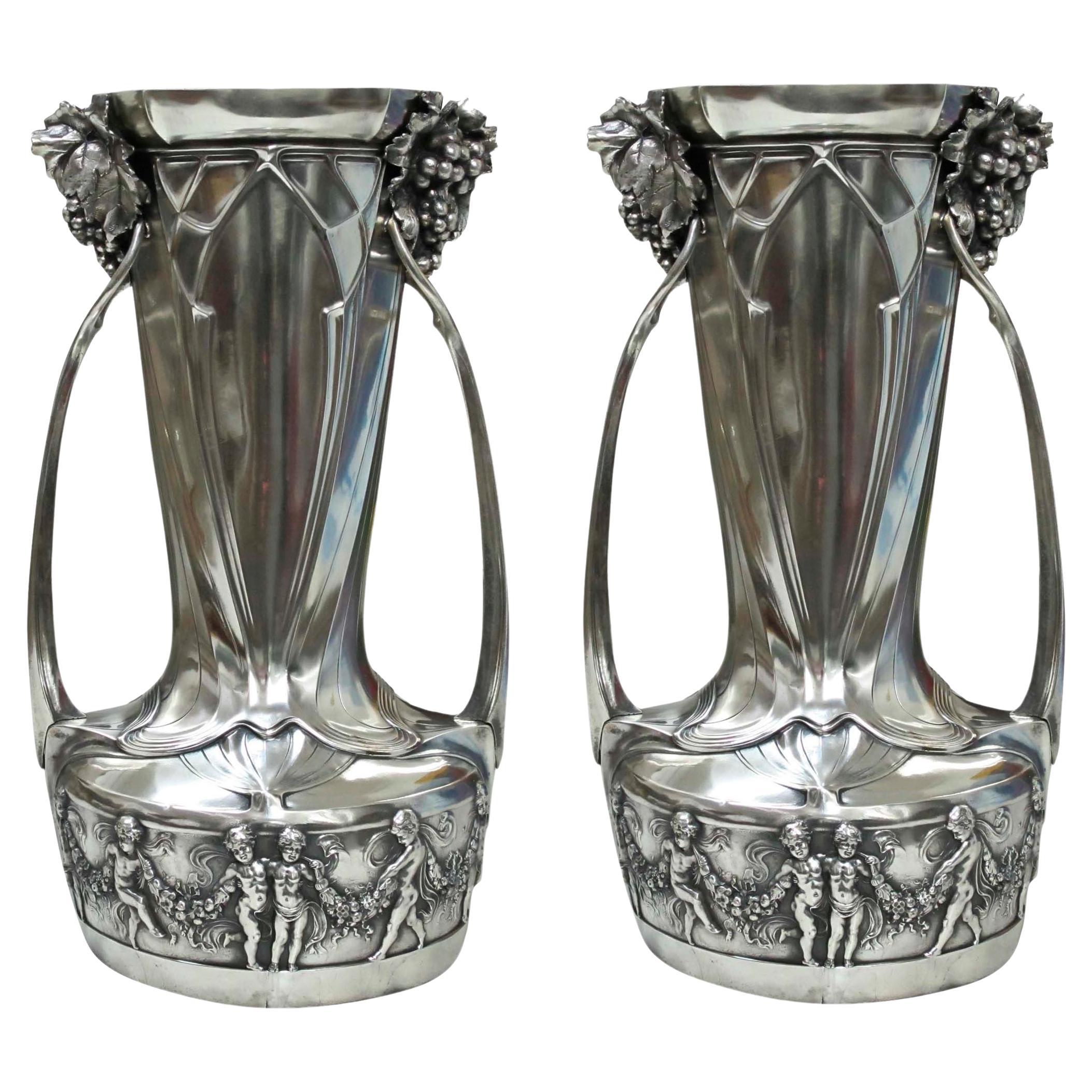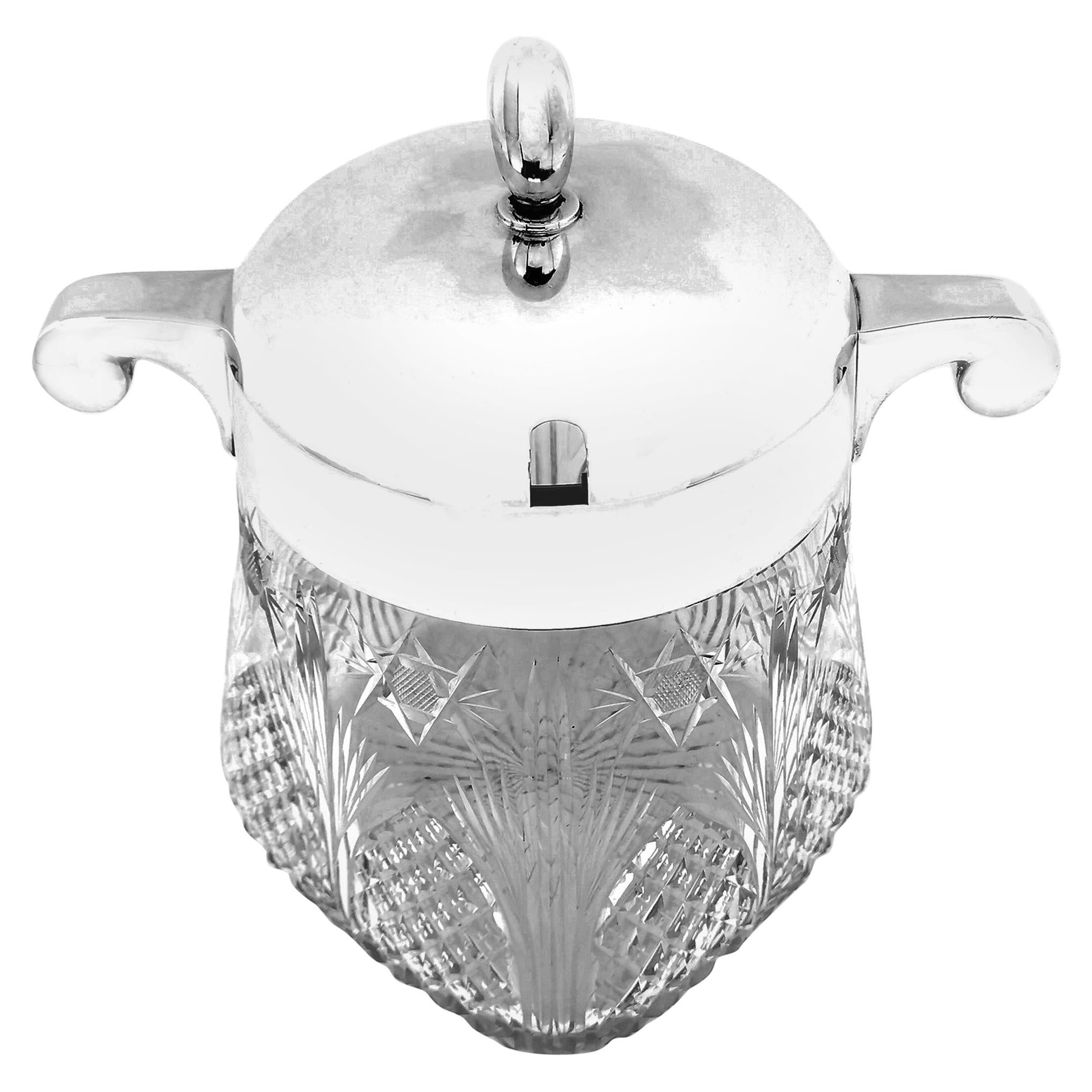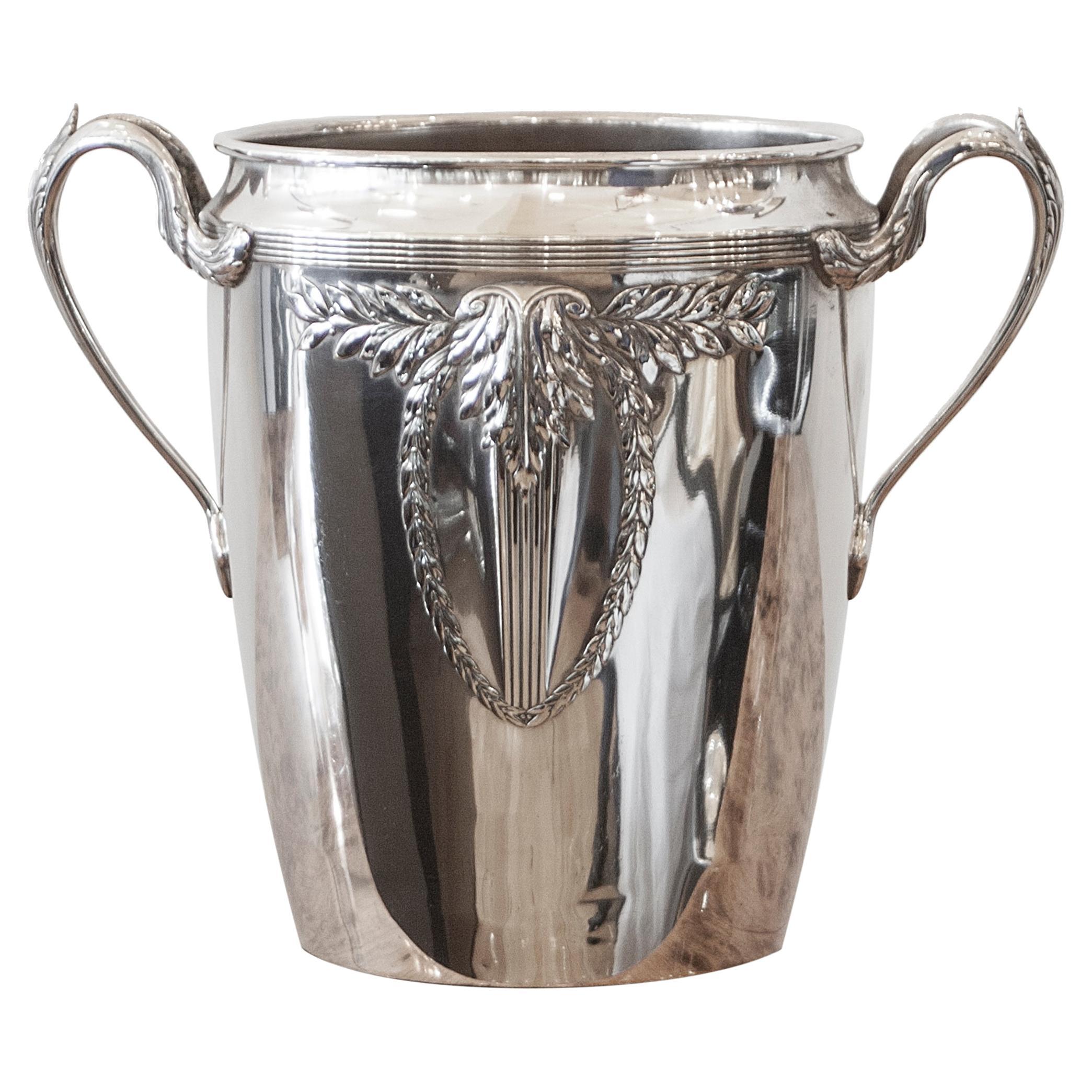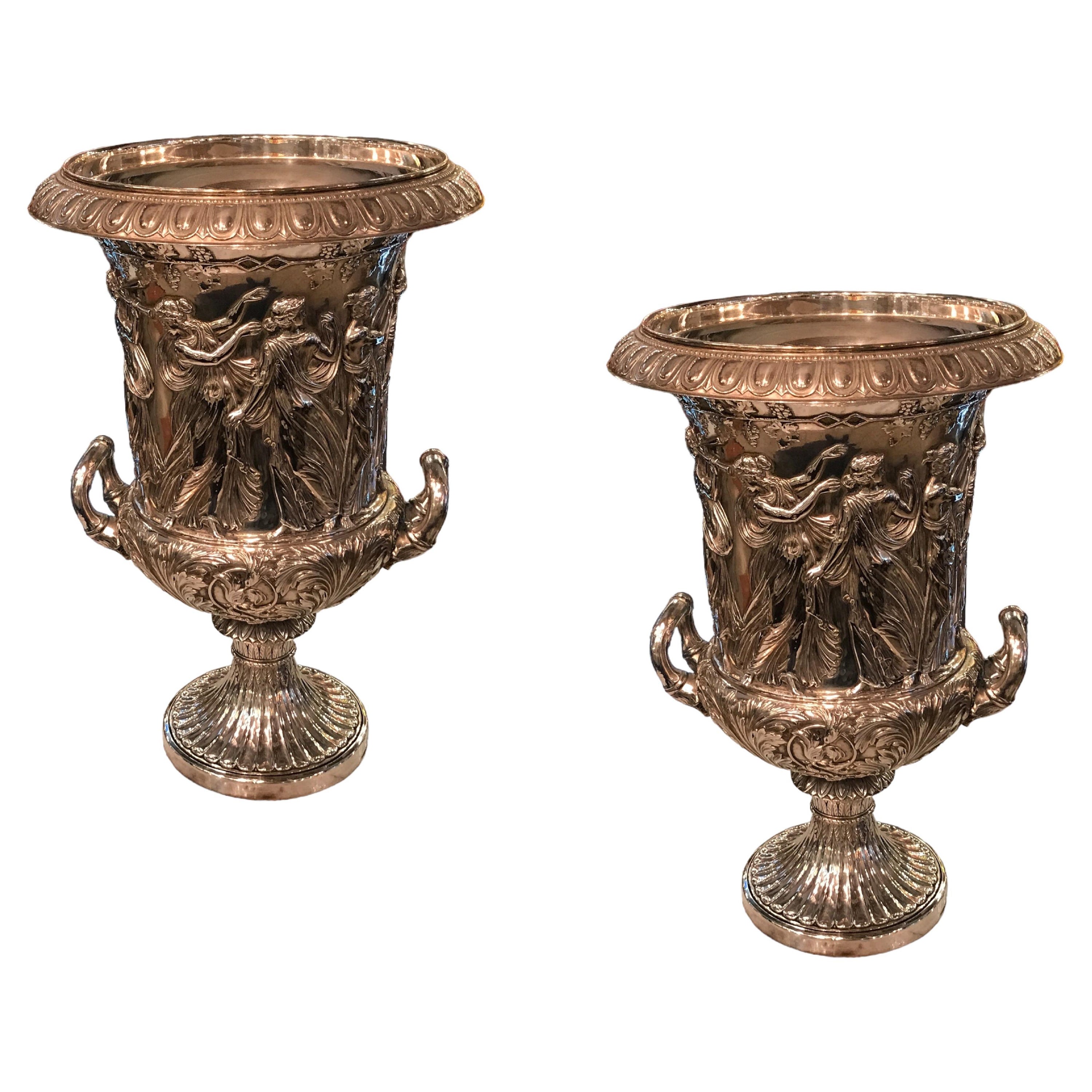Items Similar to Pair of Wine Coolers, 1900, German
Video Loading
Want more images or videos?
Request additional images or videos from the seller
1 of 18
Pair of Wine Coolers, 1900, German
About the Item
Can be re-silvered or gilded
If you have any questions we are at your disposal.
Pushing the button that reads 'View All From Seller'. And you can see more objects to the style for sale.
Why are there so many antiques in Argentina?
In the 1880 – 1940 there was a grate wave of immigration encouraged by the periods of war that were taking place.
1st World War took place between 1914 and 1918
2nd World War took place between 1939 and 1945
The immigrants options were New York or Buenos Aires. Tickets were cheap and in Buenos Aires they were welcomed with open arms, as it was a country where everything was still to be done.
Argentina was the country of new opportunities, labour was needed and religious freedom was assured, in many cases the of the family travel first until they were settled and then the rest of the family members join them.
In the immigrant museum “Ellis Island Immigrant Building” in New York you can se the promotional posters of the boats that would take them to a new life.
Between the years 1895 and 1896, Argentina had the highest DGP (gross domestic product) per capita in the world according to the Maddison Historical Statistics index, this situation arose due to the large amount of food being exported to European countries, which were at war.
The Argentinean ships left the port of Buenos Aires with food, but they returned with furniture, clothes and construction elements, (it´s common to see this the old buildings of the historic neighbourhood of San Telmo, the beams with the inscription “Made in England)”, as well as many markets that were built in Buenos Aires, such us the San Telmo Market, whose structure was brought by ship and afterwards assembled in 900 Defensa Street.
With the great influence of European immigrants living in the country, the children of the upper classes travelled to study in France, resulting in the inauguration of “La Maison Argentinienne”, on 27th of June 1928, in the international city of Paris, which hosted many Argentinians that were studying in Frace.
It´s the fourth house to be built after France, Canada and Belgium, being the first Spanish-speaking one. Still in place today (17 Bd Jourdan, 75014, Paris, France). Many of the children of these wealthy families who attended international art exhibitions, museums and art courses abroad, took a keen interest in the European style. This is why Buenos Aires was at the time referred as “The Paris of South America”.
Between the years 1890 and 1920 more than a hundred Palaces were built on Alvear Avenue the most exclusive avenue in Buenos Aires. Today some of these palaces have been transformed into museums, hotels and embassies.
In the year 1936, the Kavanagh building was inaugurated, it was the tallest reinforced concrete building in South America.
During 1994 the American Society of Civil Engineers distinguished it as an “international engineering milestone”, and it´s now considered a World Heritage of Modern Architecture.
At the time was common to hire foreign architects such as Le Corbusier, who visited Buenos Aires/Argentina in 1929 and in 1948 he drew up the blueprints for a house built in La Plata City (which was declared a World Heritage Site).
In 1947, the Hungarian architect Marcelo Breuer designed “Parador Ariston” in the seaside city of Mar del Plata. After an Argentinean student at Harvard University convinced him to come to Argentina. He worked on an urban development project in the Casa Amarilla, area of La Boca.
The Ukrainian architect, Vladimiro Acosta, arrives in Argentina in 1928 and worked as an architect until que moved to Brazil.
Antonio Bonet, a Spanish architect who worked with Le Corbusier in Paris, arrives in Argentina in 1937, where he carried out several architectural works and in 1938 designs the well-known BFK chair.
Andres Kálnay, of Hungarian origin, made around 120 architectural masterpieces, among which the former Munich brewery stands out, he even made the furniture’s design.
The German architect, Walter Gropius, director of the Bauhaus, lived in Argentina, where he wrote articles for “Sur” magazine and founded in Buenos Aires, an architectural firm with Franz Möller, who was also an architect, where he built two houses.
At the same time several famous designers decided to immigrate to Argentina, among them we can find the well-known French designer, Jean-Michel Frank, who arrived in the country in 1940 and also worked for the Rockefeller family.
Special pieces were made, which were sold exclusively in the country, such as the well-known German company “WMF”, who sold their products by catalogue, which were chosen by the ladies of high society in the list of wedding gifts, as well as the pieces designed by Christofle.
The Swiss sculptor Alberto Giacometti, made special pieces for Argentinean mansions.
In 1904 the first Jansen branch outside Paris was established in Buenos Aires, as the Argentinean clientele demanded a large amount of furniture, from the end of the 19th century to the mid-20th century.
In 1970, the brand Rigolleau Argentina made pieces authorised by Lalique.
The brands Maple and Thompson also set up shop in the country.
The French plastic artist, Marcel Duchamp moved to Argentina in 1918-1919.
Glass signed Gallé, Charder, Leverre, Schneider, Muller and other French firms. They were bought in flower shops and were given to ladies with beautiful floral arrangements.
Some furniture manufacturers travelled to international fairs and bough the patterns to produce the furniture in Argentina, such as the furniture firm Englander and Bonta, who bought the patterns ins Italy.
It is worth mentioning that in Argentina we have the largest community of Italians outside of Italy, as it is estimated that 70 percent of the inhabitants have at least one Italian descendant, followed by Spanish immigrants.
The most Important furniture stores in Argentina:
Comte is founded in 1934 (under the direct management of Jean Michel Frank in 1940).
Nordiska (Swedish company established in 1934).
Churba in 1960, a company that brought foreign designers to present their furniture in the country:
Denmark: (Arne Jacobsen, Finn Juhl, Bender Madsen, Ejner Larsen, Poul Kjaerholm, Hans Wegner)
Sweden: (Hans Agne Jakobsson, Gustavsberg)
United States: (Herman Miller)
Finland: (Lisa Johansson, Folke Arstrom, Tapio Wirkkala, Alvar Aalto, Timo Sarpaneva)
Swedish Factory: (Orrefors)
Italy: (Littala, Vico Magistretti, Emma Gismondi, Gae Aulenti, Angelo Mangiarotti, Elio Martinelli, Gianna Celada, Angelo Mangiarotti, Mario Bellini, Carlo Scarpa)
Finland: (Olivia Toikka)
Plata Lappas (Lappas Silver): a goldsmith shop founded in 1887 in Argentina by Alcibiades Lappas of Greek origin.
In 2019, in Argentina took place “the Art Deco world congress”, in which we participated as hosts invited by Geo Darder, founder of the Copperbridge – Foundation, in which prominent people from all over the world attended to learn about Art Deco in Argentina.
Argentina currently has more than 100 Art Deco buildings and another 90 Art Nouveau buildings throughout the city of Buenos Aires.
Argentina is a country that has not been involved in many wars, which is why it has been a refuge for works of art and antiques from different periods of time, unlike European countries. That is way many collectors, museums and antique dealers from all over the world visit it, you should not miss the opportunity to visit this great country.
Laura Guevara Kjuder, architect.
- Dimensions:Height: 14.18 in (36 cm)Width: 13.39 in (34 cm)Depth: 8.86 in (22.5 cm)
- Style:Art Nouveau (Of the Period)
- Materials and Techniques:
- Place of Origin:
- Period:1900-1909
- Date of Manufacture:1900
- Condition:Wear consistent with age and use.
- Seller Location:Ciudad Autónoma Buenos Aires, AR
- Reference Number:
About the Seller
5.0
Vetted Seller
These experienced sellers undergo a comprehensive evaluation by our team of in-house experts.
Established in 1982
1stDibs seller since 2022
21 sales on 1stDibs
Typical response time: <1 hour
- ShippingRetrieving quote...Ships From: Ciudad Autónoma Buenos Aires, Argentina
- Return PolicyThis item cannot be returned.
More From This SellerView All
- 2 Wine Coolers, Style: Art Nouveau, Jugendstil, Liberty, Year: 1900, GermanyBy WMF Württembergische MetallwarenfabrikLocated in Ciudad Autónoma Buenos Aires, C2 Wine Cooler WMF Style: Art Nouveau year: 1900 Country: Germany Materials: silver plated Several of the WMF objects can be seen in museums We have specialized in the sale of Art D...Category
Antique Early 1900s German Art Nouveau Wine Coolers
MaterialsMetal
- Champagne Cooler Style, Art Nouveau, Jugendstil, 1900, Signed Anezin Y Cia WMFBy WMF Württembergische MetallwarenfabrikLocated in Ciudad Autónoma Buenos Aires, CChampagne cooler Signed Anezin y Cia : It is the firm that sold it in Argentina Firms: WMF G = Introduces on the 1 st June 1910, in the interests of improved legibility, especially ...Category
Antique Early 1900s German Art Nouveau Wine Coolers
MaterialsMetal
- Champagne Cooler Style, Art Nouveau, Jugendstil, Liberty, Year: 1900, Signed WmfBy WMF Württembergische MetallwarenfabrikLocated in Ciudad Autónoma Buenos Aires, CChampagne cooler WMF Style: Art Nouveau year: 1900 Country: Germany Materials: silver plated Several of the WMF objects can be seen in museums We have specialized in the sale...Category
Antique Early 1900s German Art Nouveau Wine Coolers
MaterialsMetal
- Pair of Champagne Coolers, Art Nouveau, Jugendstil, Liberty, 1859, Sign: WmfBy WMF Württembergische MetallwarenfabrikLocated in Ciudad Autónoma Buenos Aires, CPair of Champagne cooler WMF Sign: Page: X in the Book – Art Nouveau Domestic Metalwork from WMF Wurttembergische Metallwarenfabrik: The Engl...Category
Antique 1850s German Art Nouveau Wine Coolers
MaterialsMetal
- Champagne Cooler Style, Art Deco, 1930By WMF Württembergische MetallwarenfabrikLocated in Ciudad Autónoma Buenos Aires, CChampagne cooler It has a detail in the marble. We have specialized in the sale of Art Deco and Art Nouveau and Vintage styles since 1982.If you have any questions we are at your dis...Category
Vintage 1930s French Art Nouveau Wine Coolers
MaterialsMarble, Chrome
- Big Vase , German, 1900 in Silver, Art NouveauLocated in Ciudad Autónoma Buenos Aires, CSigns: Hugo Leven Hugo Leven studied at the Kunstgewerbeschule and then at the Düsseldorf Art Academy. For some time he worked in his father Louis Leven's studio, had numerous contac...Category
Antique Early 1900s German Art Nouveau Vases
MaterialsMetal
You May Also Like
- Antique German Silver & Cut Glass Punch Bowl / Champagne Wine Cooler, circa 1895Located in London, GBAn impressive Antique German cut glass Punch Bowl with a silver collar and fitted lid. The Punch Bowl has a square base which flows upwards into a cir...Category
Antique Late 19th Century German Wine Coolers
MaterialsSilver
- Art Nouveau Flowers Champagne / Wine Bucket Cooler, 1900´sLocated in Buenos Aires, OlivosArt Nouveau Flowers Champagne / Wine bucket cooler. 1900´s. Flowers design. Very Nice and unique cooler.Category
Early 20th Century French Art Nouveau Barware
MaterialsBrass
- 20th Century German Neo-Classical Solid Silver & Glass Wine Coolers, c.1900By Simon RosenauLocated in Royal Tunbridge Wells, KentAntique early 20th century German pair of solid silver & royal blue glass wine coolers. Of campana form, the sides applied with frieze of classical biblical scenes, beside Grecian co...Category
20th Century German Neoclassical Wine Coolers
MaterialsSilver
- Onyx Wine Bottle StandLocated in EINDHOVEN, NBPut your wine on a style. Crafted entirely from travertine, this wine holder is a beautiful way to put your favorite wine bottle on a kitchen counter or table, and is striking enough...Category
2010s Wine Coolers
MaterialsOnyx
- Travertine Wine Bottle StandLocated in EINDHOVEN, NBPut your wine on a style. Crafted entirely from travertine, this wine holder is a beautiful way to put your favorite wine bottle on a kitchen counter or table, and is striking enough...Category
2010s Wine Coolers
MaterialsTravertine
- Pair of Victorian Silver Parcel Gilt Wine CoolersLocated in New York, NYMarked on basket liners, shoulders and handles: Birmingham, 1877, Maker: Fredric Elkington.Category
Antique 1870s English Wine Coolers
MaterialsSilver
Recently Viewed
View AllMore Ways To Browse
Orrefors Wine Glasses
Mulled Wine
Antique Iron Wine Rack
Arthur Court Elephant
Copper Punch Bowl
Swan Wine Cooler
Marc Chagall Ice Bucket
Pineapple Cooler
Silver Champagne Bucket W Stand
Teak Wine Bucket
Top Hat Wine Cooler
Antique Pewter Ice Bucket
Cooler Deer
Vintage Cuvee
Moet Chandon Champagne Cooler
Moet Cooler
Pineapple Ice Cooler
Silver Wine Cooler L Bottle





